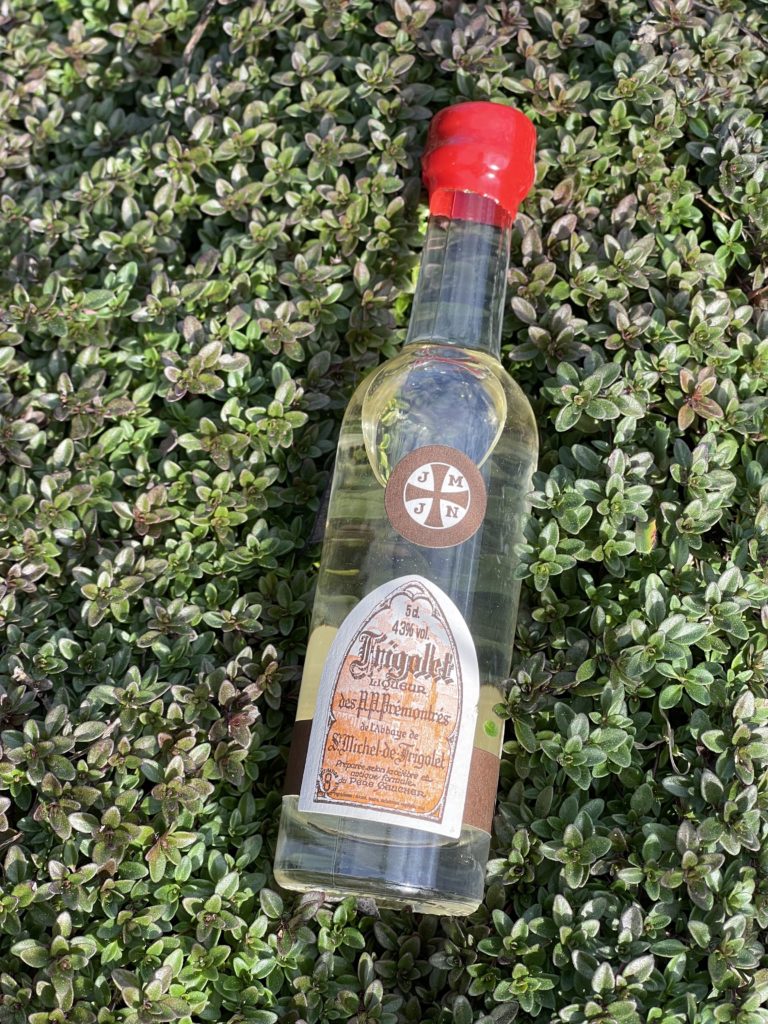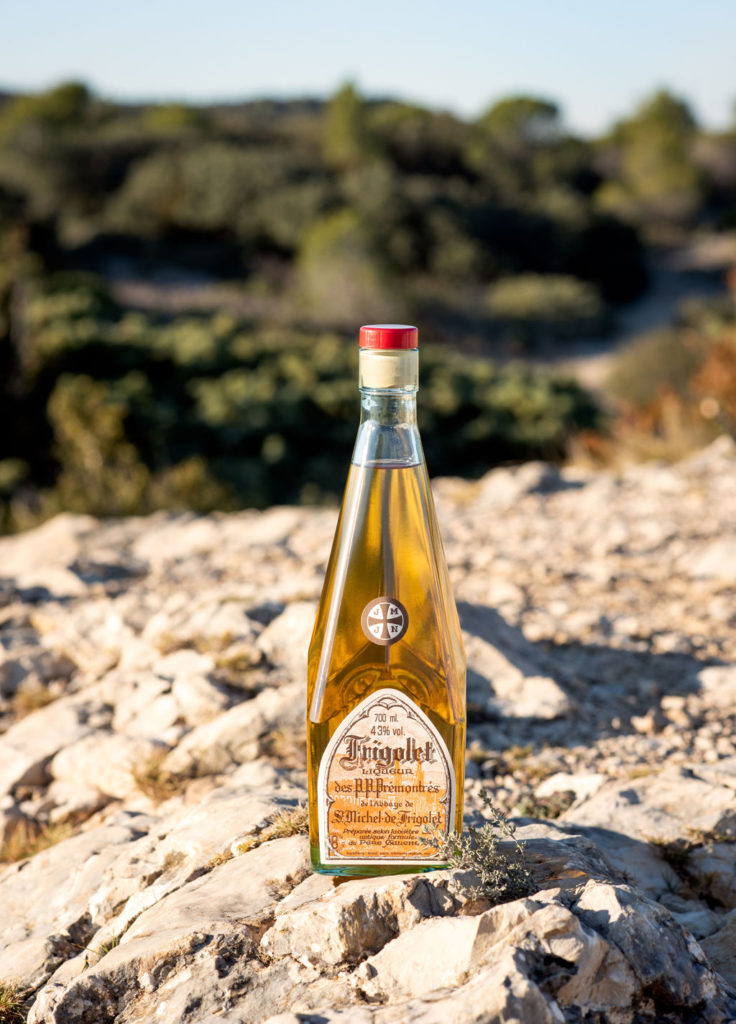
« And drop by drop, with the meticulous care of a lapidary counting pearls, the parish priest of Graveson poured a hint of green, golden, hot, sparkling, exquisite liqueur ... Is it Father Gaucher's elixir, the joy and health of our Provence. Isn't it worth all the chartreuses in the world? »
Alphonse Daudet
It is with these words, in his famous lettres 'Lettres de mon Moulin', that Alphonse Daudet describes the Frigolet liqueur in 1866. And define it he does, as his words perfectly embody Provence.
Frigolet's name is inspired from his Provençal name, ferigoulo, which means thyme. It is therefore natural to assume that this typically aromatic herb from the South, is present in the composition of the liqueur. Some 30 other plants and spices, rigorously selected and skilfully dosed, complete the recipe. But the details have been kept secret for almost two centuries. Long enough to evoke a mystery around the intriguing elixir.
The plants
Châteaurenard is nestled between two mountain ranges. To the east, the Montagnette, a limestone massif with typically Provençal vegetation, on which we can find the Saint-Michel-de-Frigolet abbey. This small hill, a natural border between the Rhône and the Durance, is covered with southern flora made up of thyme, sage and rosemary. To the south, the Alpilles massif, home to more than 550 plant varieties: abundant thyme and rosemary, aspic lavender, fennel and scorpion genets, all sheltered by kermes oaks and Aleppo pines.
The plants frowing in the middle of this Provençal hill are particularly aromatic: the shortage of water and the remanent drought specific to the region encourage the flora to produce large quantities of essential oils. The aromatic quality of Provence plants is therefore incomparable. It is no wonder that the monks from Frigolet exploited these two natural reservoirs of plants to develop their elixirs. d’étonnant alors à ce que les moines aient exploité ces deux réservoirs naturels de plantes pour élaborer leurs élixirs.
Toutefois, pour garantir une qualité irréprochable et homogène à la liqueur, les distillateurs successifs de l’Elixir ont décidé de s’approvisionner auprès de spécialistes : tout d’abord le marché aux herbes de Châteaurenard, puis le Laboratoire d’Herboristerie Générale de Marseille (LHG). L’établissement propose depuis l’origine des matières premières d’exception, évaluant au cas par cas les besoins de chaque client. Tout naturellement, la distillerie Frigolet s’est tournée vers le LHG pour se procurer les plantes nécessaires à la fabrication de sa liqueur.
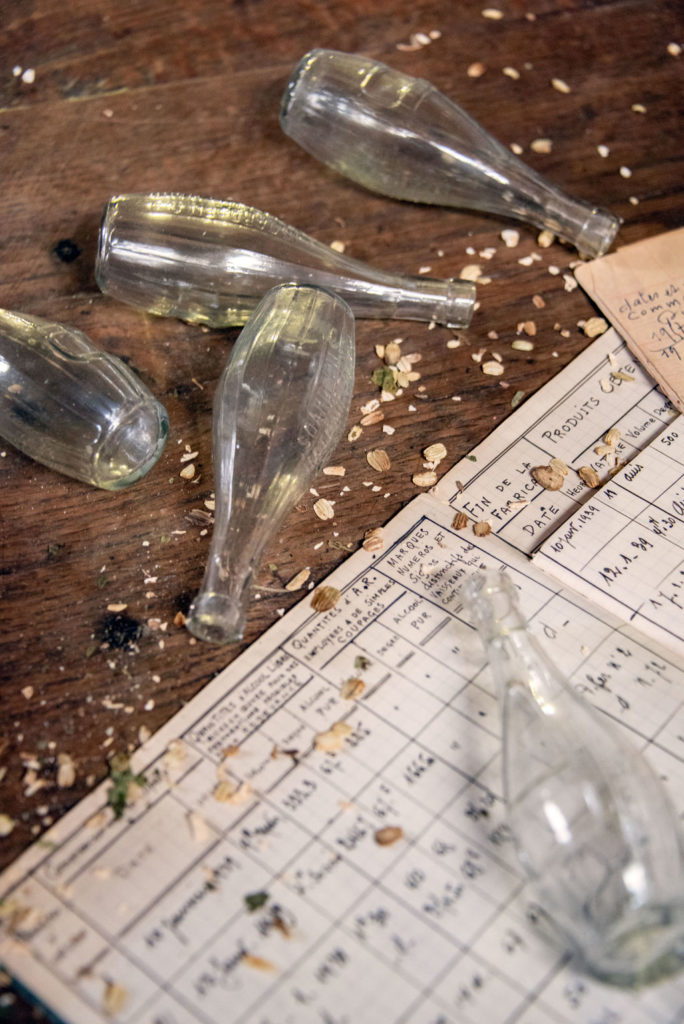
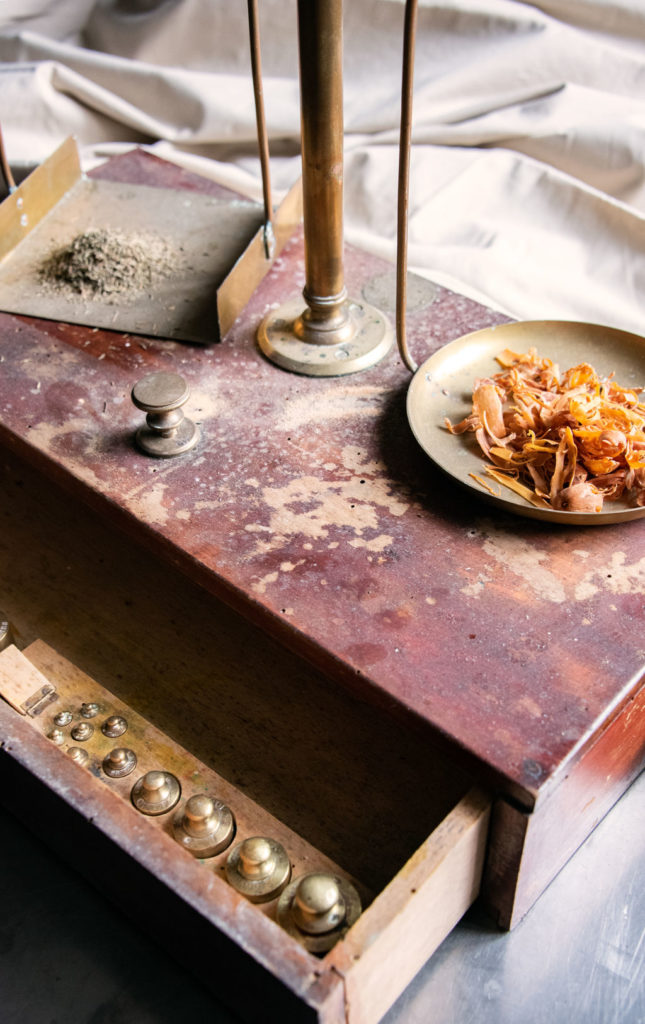
The spices
It is said that the Frigolet liquor also includes spices like cinnamon, nutmeg and cloves. Whilst this remains an assumption, we do know that the region of Châteaurenard had, at the time of the creation of the beverage, access to these ressources as the city was situated on a spice road.
As cited by an edict of 1540 promulgated by François the 1st,er, spices were mainly transported by river and sea. The port of Lacydon in Marseille was therefore one of the first gateways to oriental spices. The ingredients transited to Lyon via the Rhône valley. History could therefore confirm the presence of the oriental spices in the enigmatic beverage.
The honey
The natural flora of Provence and centuries old arboreal activity have contributed to the development of beekeeping in the region. The monks, like all inhabitants of the county, consumed honey. Nectar with a thousand virtues, it was the essential ingredient of many nuns' potions. So it was quite naturally included in the Frigolet recipe in the form of a delicious syrup. But this recipe too, is a secret. We don't exactly know what type of honey is used. Rumours suggest that it's a well balanced combination of thyme, rosemary, lavender and garrigue honey flowers.

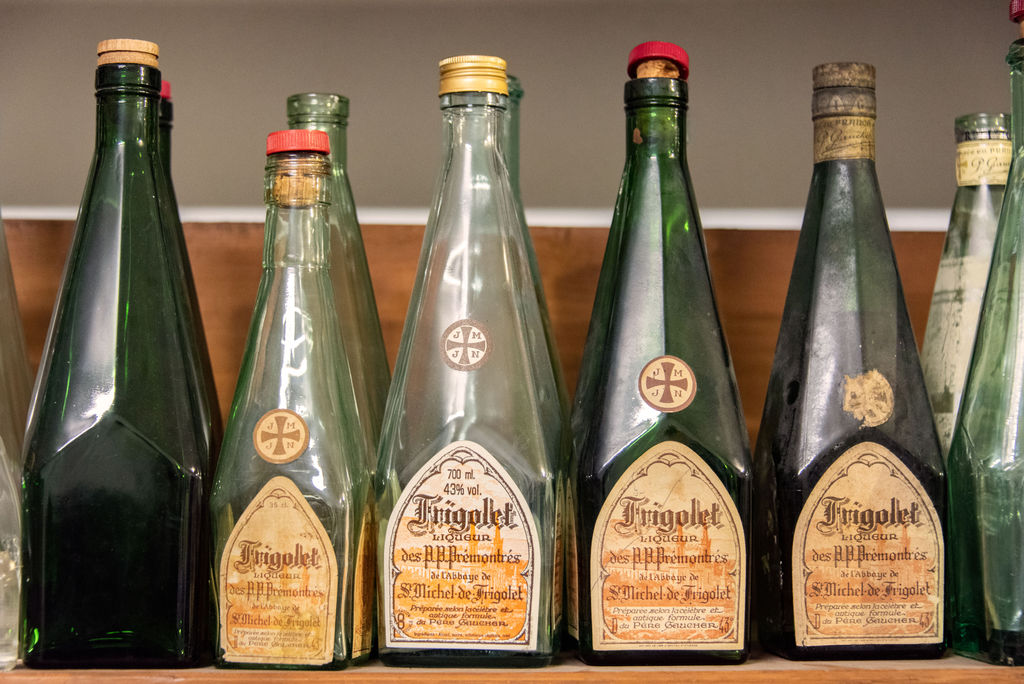
The bottle
"The bottle isn't important as long as you're drunk" - said Alfred de Musset. It is clear that the Frigolet, does not exactly see it this way.
Created by Joseph Isoard, the founder of the distillery, the elegant bottle embodies the identity of Frigolet:
- the respect for a precious heritage, the distinct shape of the bottle is a tribute to the silhouette of the bell towers of the Abbey of Saint Michel;
- the rigour imposed by the creator of the Frigolet, is perfectly represented by the square lines of the bottle, originally shaped in wooden moulds;
- the authenticity of the elixir, celebrated by the sleek design of its bottle
Each bottle is marked with a cross pattée, a tribute to the white monks, but also a symbol of balance in spirit (piety) and matter (the vegetal alchemy) at the origin of the elixir). It is marked with 4 letters: J; M and J a dedication to the Holy Family and N, an allusion to Saint-Nortbert of Xanten, founding farther of the order of regular chanoines of Prémontré.
